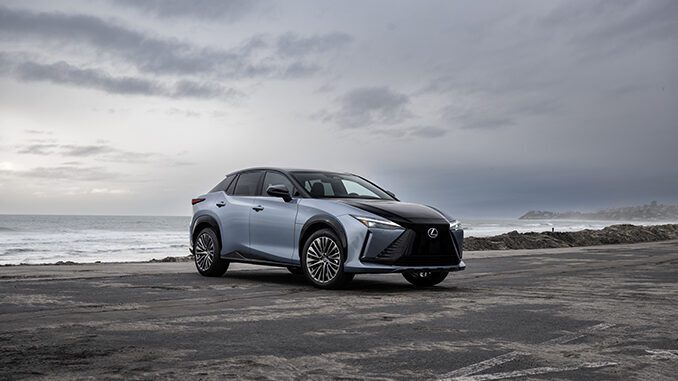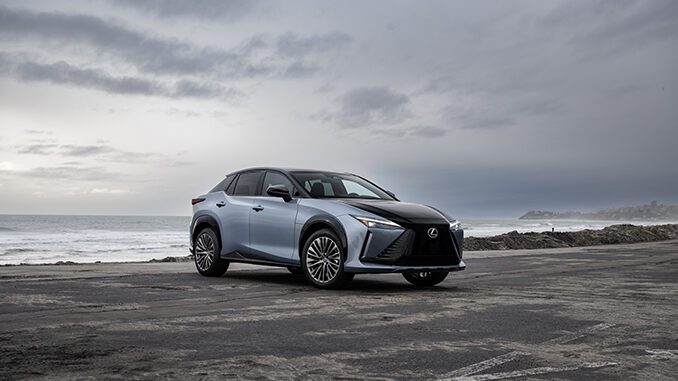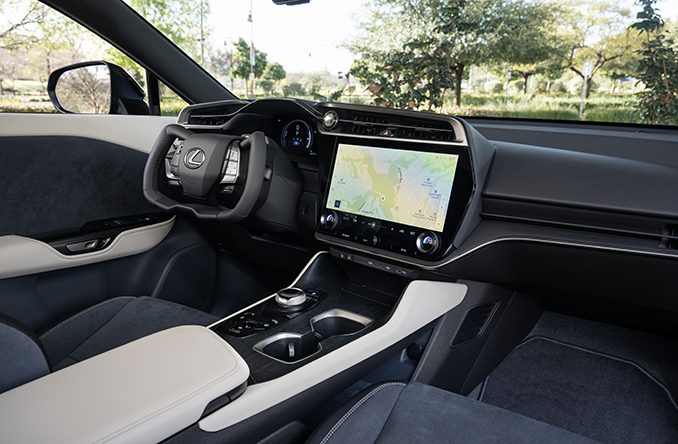

SAN DIEGO — The control scheme of the automobile has remained relatively consistent for decades. Sure, we’ve transitioned from manual to automatic transmissions, and countless features like high beams and windshield wipers are becoming more automated, but the steering wheel and pedal setup remain.
Lexus has other ideas, bringing in some aerospace-grade tech to let us drive cars in a completely new way. The result is the Lexus RZ, the first all-electric vehicle from the luxury arm of Toyota, and it has an (optional!) yoke-ish steering mechanism.
I don’t even know what to call it, and Lexus doesn’t have a good name, either. Called a “racing-inspired steering control” in the press release, the yoke connects to a steer-by-wire system with no physical or mechanical connection to the wheels. In other words, turning the yoke tells the computer how much you want to turn the wheels, and the computer executes it for you.
This might seem wild and crazy, but the technology is decades old. If you’ve flown on an Airbus aircraft in the past 30 years, you’ve experienced fly-by-wire, and the Boeing 777 and 787 use the tech too. Like in an airplane, there are several benefits to installing the technology in an automobile.
For one, it makes a proper racing-style steering control possible. Tesla offers a yoke in its Model S Plaid, but that mechanism uses a standard control scheme and turns several times lock-to-lock, which isn’t ideal for a yoke.
Conversely, the Lexus works like a Formula One race car, with just more than 360 degrees of total turning ability. In other words, with your hands at 9 and 3 on the yoke, you can turn half a revolution left or right. The car then interprets your steering input and turns the front wheels appropriately depending on the vehicle’s current speed.
You can make small movements with the steering wheel in a tight parking lot or narrow city street, resulting in significant steering angle changes. Once the driver is used to the yoke control scheme, getting in and out of parking spaces becomes vastly easier, greatly benefiting those with mobility issues and simplifying life for everyone else. At higher speeds, the steering ratio reverses and steering inputs become smaller.

It takes a bit of getting used to, and Lexus asked us to ride along with a trainer before letting us loose on the road alone after an unnamed journalist took a turn more aggressively than intended when just setting off. But the benefits are clear. By shrinking the physical size of the steering apparatus, the dash cluster can sit higher and farther away from the driver, maximizing visibility of the road (especially for shorter drivers), and the rectangular shape of the yoke helps with ingress and egress.
Lexus has also considered the implications of not having a physical backup to the steering input, and there are a dedicated backup battery and additional control computers in the steering column in the event of catastrophic power failure in all other vehicle systems that will allow for safe and continued control of the RZ in an emergency.
It’s worth noting that the yoke will have late availability, and I highly suggest trying it before you buy. It’s cool, but I don’t think it’s for everyone.
And then we have the rest of the RZ. Built on the same platform as the Toyota bZ4X, the RZ has a new suspension, body, interior, and more. The 71.4 kWh battery offers up to 220 miles of range on 18-inch wheels and 196 miles on 20-inch wheels. That’s not the best around, but considering the target market of this vehicle (existing Lexus owners who love the brand and have been waiting for Lexus to make an EV before buying one, I imagine) and its purpose as a second or third commuter car, I suspect it will be fine.
The dual-engine all-wheel-drive setup offers 308 horsepower and a Lexus-estimated 0-60 of 5 seconds. The car is zippy, as expected, and the ride and handling are pure Lexus. If you like the Lexus drive and feel, you’ll enjoy the RZ.
The exterior design doesn’t push boundaries, but it is sleek and sophisticated, with a toned-down Lexus hourglass front grille. It reminds me of the Volvo C40 Recharge, a huge compliment.
One of my favorite features is a new radiant heat function. A pair of heating elements have been placed on the underside of the steering column and beneath where the glovebox would be (it’s been removed to make this feature possible), just above the driver and passenger’s legs. When the seat heaters are activated, these radiant heat elements quickly warm your legs.
It’s a surprise and delight feature that saves battery because it’s much more energy efficient to heat you in this manner versus warming air and blowing it upon you. It also makes the heat much more immediate, which is excellent news for those who live in colder climes.
The Lexus RZ starts around $60,000 and rises to under $70,000 as you load it with options. However, it is built in Japan, which means it isn’t eligible for any federal tax credit in the US. Lexus promises to bring 4,900 units to the US, and they’ll be allocated across dealerships with no organized online reservation system. So, if you want one, call your local Lexus dealer ASAP.



